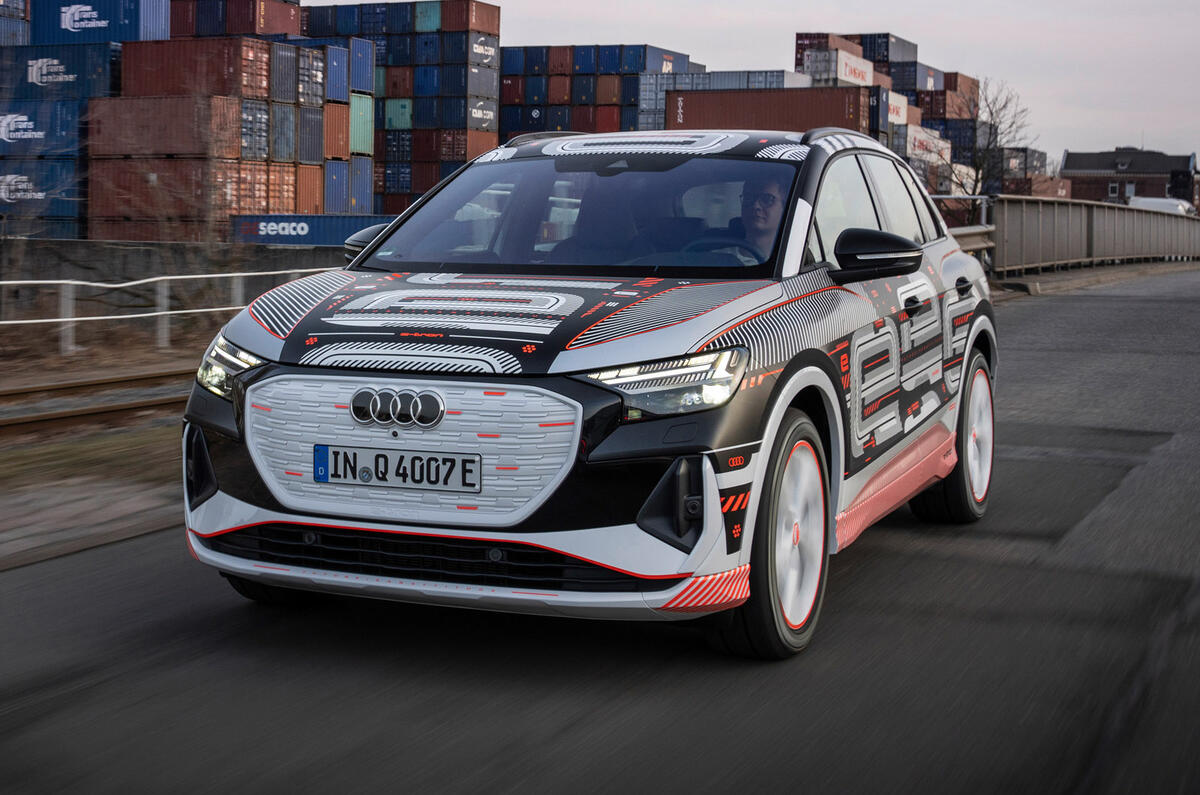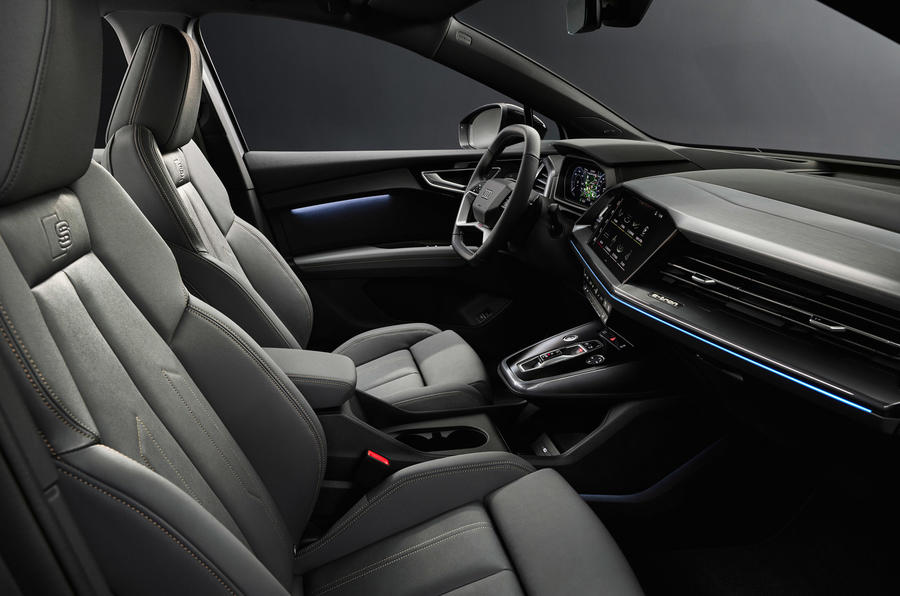The Q4 E-tron will join the Audi E-tron, E-tron Sportback and E-tron GT in UK dealerships from this autumn as Audi continues to swell its electric car ranks.
The new mid-sized SUV is based on the Volkswagen Group’s versatile MEB electric car platform, so it shares its drivetrain, lithium ion battery, charging system and chassis with the Volkswagen ID 3 and ID 4, alongside which it will be produced at Volkswagen’s factory in Zwickau, Germany.
Prices are expected to start at around £40,000, with the range-topping model pitched closer to £50,000, when the Q4 E-tron goes on sale April.
The car has progressed into an advanced stage of development, with very few stylistic changes over the 2019 concept. Its proportions are familiar from its ID 4 and Skoda Enyaq iV siblings, but key differentiators include a new interpretation of Audi’s single-frame grille, distinctive vertically stacked front air ducts, angular LED headlights, a short bonnet and a heavily raked windscreen.
Further back, prominent side feature lines sit above large wheelhouses, helping to add structure to the flanks, while a sizeable spoiler above the angled tailgate helps to smooth airflow across the gently sloping roof. Wheels vary in diameter from a standard 19in to 21in on top-rung variants.
At 4590mm long, 1865mm wide and 1613mm tall, the Q4 E-tron was conceived as an electric equivalent to the popular Audi Q3, but its comparatively short overhangs and cab-forward silhouette means interior space is more on a par with the larger Audi Q5.
The rear bench is positioned 70mm higher than the front seats and offers impressive leg, head and shoulder room for all three passengers.
The boot extends from 520 to 1490 litres with the 40:20:40-split rear seat folded down, while compartments around the cabin together give an extra 25 litres of stowage.
The driving environment is a departure from that of conventionally powered Audis, with a unique dashboard, new steering wheel with touch-sensitive controls, a 10.25in digital instrument display with unique graphics and a standard 10.1in (or optional 11.6in) MMI infotainment touchscreen.
Buyers will be able to choose from three display set-ups: Standard, Virtual and Virtual Plus. Voice control is an option. The Q4 E-tron is also the first Audi to offer an optional augmented-reality headup display, which projects dynamic sat-nav commands onto the windscreen with varying depth of field.
The elevated driving position provides quite a commanding view of the road, but the Q4 E-tron’s high beltline makes its cabin feel less exposed than that of similarly sized SUVs.
A broad expanse of dashboard means the front passengers sit well back from the base of the windscreen, but the controls and high-set infotainment touchscreen remain within easy reach.












































Join the debate
Add your comment
At the considerable risk of being a total bore, I will say that the range issue is still a barrier for me!
Example: I regularly took trips from Teesside to Duxford IWM: 220 miles each way. four people in the car and one tankful of diesel.
There is no way that an EV can be re-charged at a public event such as those we attended: too many people!
So what is the alternative? Queue up at charging points on a Sunday evening with all the crowds from the event at Duxford plus those from Silverstone as they join the Great North Road? (the 2 events were often on the same day), let alone the normal 'family outing traffic'? At 30 minutes per car -minimum- it would take three days to get back home!
Sort the range and we are talking; until then, I remain a dinosaur... Sorry!
Agree, though my Model S does pretty well on my Cotswolds-Cornwall run.
I have a Cybertruck on order for 2022, claimed range 500 miles, and of course recharging with the Supercharger network is a snap.
And VW is claiming that future developments will enable recharging in comparable time to a fuel pump.
EVs have come on dramatically in the last few years, with Tesla leading the way. So the best plan is to wait until an EV is released to match your requirements.
Another lumpen Audi, sporting a barn door as a grille.
Another lumpen Audi, sporting a barn door as a grille.